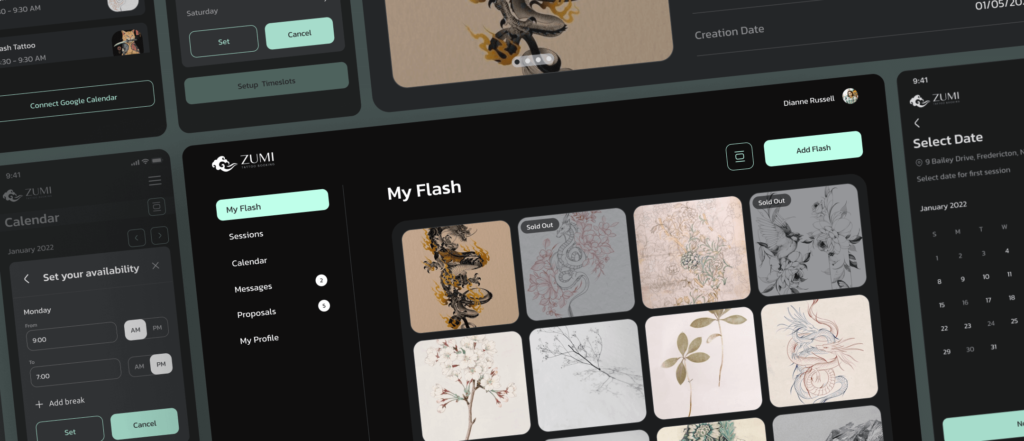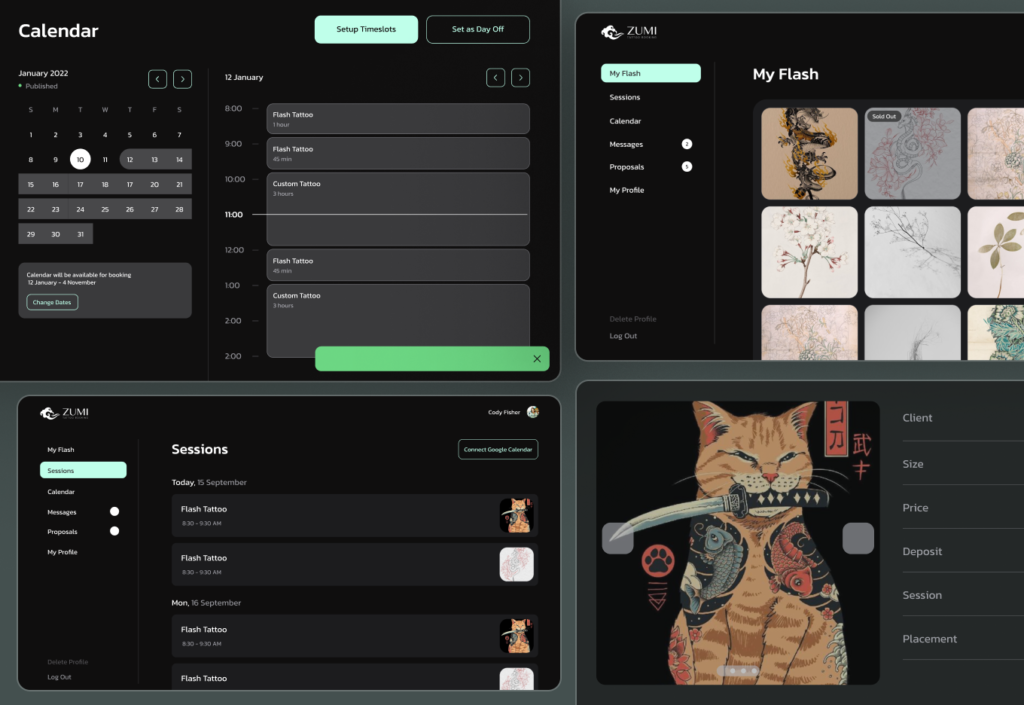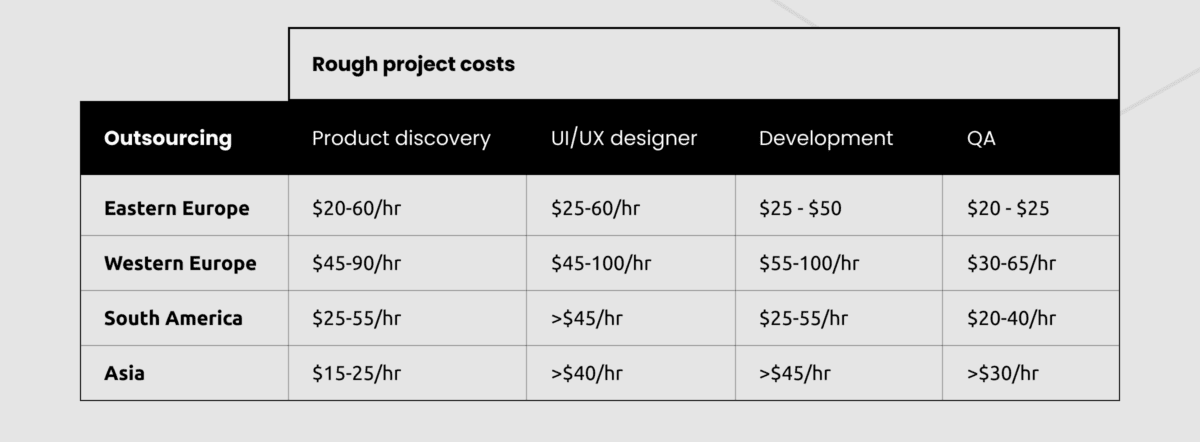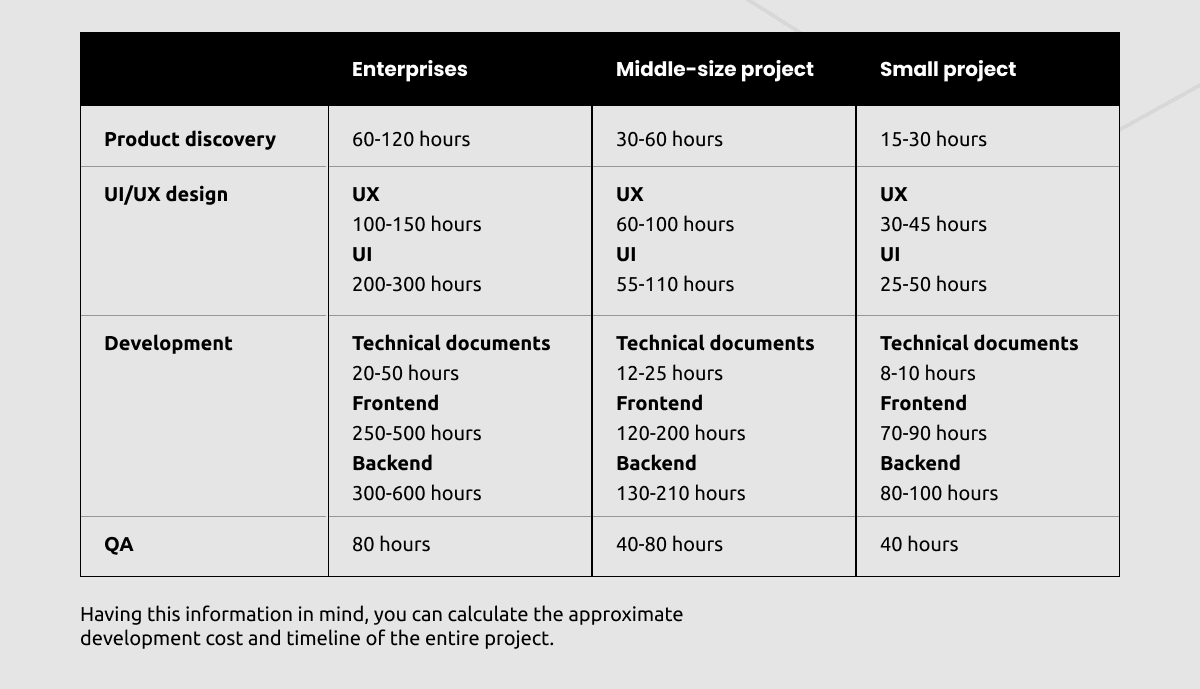The wide popularity of peer-to-peer (P2P) marketplaces has made it possible to connect demand with supply efficiently. That’s why the peer-to-peer marketplace business model is a proven way for startups to start their business with limited resources and open unlimited business opportunities.
Based on our experience in developing e-commerce software, we would like to share useful insights to help you realize your product idea as soon as possible. So, we prepared a ready-to-use guide on how to build a peer-to-peer marketplace website, where you can:
- Adopt valuable experience based on the RewiSoft case
- Find out which P2P marketplace model suits you best
- Understand key development challenges and learn how to mitigate those risks early
- Learn how to develop an online marketplace step by step
- Select the required feature list for your solution
- Get useful P2P marketplace development tips to get started
- Examine the costs of developing an online marketplace website
How to Build a Peer-to-Peer Marketplace Website With RewiSoft
The RewiSoft team has extensive experience in developing peer-to-peer marketplaces. Using advanced technologies and best practices, we can provide you with full-cycle peer-to-peer marketplace development. Our design and development team consists of middle and senior-level specialists. For each project, we individually select a team that can turn your every idea into reality.
Our web development services include the following:
- Custom web application development services. We develop robust, progressive, scalable and secure web applications of any complexity.
- Full-stack development services. Our full-stack engineers have the knowledge and expertise required to construct full-fledged online products for your company.
- Front-end development services. Our front-end developers create full-featured user-friendly interfaces, modernize legacy products, and maintain product support all the way through.
- Back-end development services. Our deep knowledge of modern and advanced technologies enables us to create high-performance back-end solutions in a timely manner.
- Web development outsourcing services. By choosing us to outsource web development services, you will get professional web developers who will create a product that fully meets your expectations and requirements.
- Web development consulting services. Our team members are experienced in providing web development consulting to help clients build high-performing, digitally transformative and feature-packed web experiences.
Get in touch with us, if you need one of our web development services. We can also provide you with peer-to-peer marketplace software development. If you have a request to create a more complex system than a website and need a team that will develop peer-to-peer marketplace software for you from scratch, we will be happy to help you.
Peer-to-peer marketplace software usually contains more functionality than a website and allows users to perform more complex tasks. Peer-to-peer marketplace software is also easier to scale in the future and adapt to business changes.
However, you need to remember that the development of peer-to-peer marketplace software may take more time and budget.
Recently, the online P2P marketplace market has been replenished with a new product released by our team. HelpPays is the largest marketplace for short-term peer-to-peer loans. This solution allows users to lend and borrow money without bank fees. Anyone can become a member of the lender community and earn extra income by helping other people.
For this project, we provided the following services:
- Business analysis & Discovery
- UI/UX Design
- User Testing
Our main goal was to develop a high-quality loan marketplace with strong product logic, advanced features, and improved platform design.
So, during product discovery, we managed to:
- Consider business and user goals
- Conduct stakeholder and user interviews
- Conduct market research
- Develop a P2P marketplace strategy
- Define marketplace personas (lender, borrower)
- Create customer journey maps
After our team agreed on the app concept, we fully finalized our ideas on how to build a peer-to-peer marketplace website. The next challenge was to create a custom design system.
So, in the UI/UX design stage, we:
- Developed the UI kit, including the creation of such elements as icons, headings, dropdowns, inputs, etc.
- Created the platform’s UI design based on the client’s preferences and fintech sector style
During the P2P marketplace development phase, our team has implemented:
- The platform’s onboarding feature, including different instruction videos for lenders and borrowers
- FAQ section to help users quickly find answers to frequently asked questions
- Largest loan marketplace where all loan requests are stored
- Direct link option to allow borrowers to submit simple loan requests
- Options to allow users to set the type of risk and maturities
- Two-factor authentication for high data protection
- Borrower and lender dashboards with required features
After our loan marketplace development was finished, we conducted planned testing. So we were able to test the functionality of the product, the logic, and test the clickable design on users.
As a result, our client was fully satisfied with the solution we developed. Today, this marketplace is gradually increasing its user base, providing a user-friendly experience, highly efficient functionality, and attractive design.
Sketch your idea with a dedicated software development team to get early market feedback on your P2P platform and pave your way to success!
How to Build a Peer-to-Peer Marketplace Website and Get Started right
Learning how to develop an online marketplace should definitely start with choosing the right P2P marketplace model. Based on the particular service you are going to provide, you’ll be able to choose the type of P2P marketplace. In general, there are four possible scenarios that can be implemented using the P2P platform model:
- Sale and purchase of different solutions or services
- Exchange of goods for money or similar goods
- Rental of goods or services
- Sale of used goods
The importance of choosing the right P2P platform
A marketplace startup is a kind of mediator between the product manufacturer and the buyer. It is highly important to choose the right P2P platform because this solution will be the foundation on which you are going to build your business.
Upon this choice, you’ll be able to evaluate how well the particular platform’s type matches your business goals, develop a business plan, and understand how long it will take you to start making a profit.
Types of P2P marketplaces
P2P online marketplaces can be classified by item, participant, and approach. Let’s break down each category:
By item:
- Rental marketplace like Airbnb. As the name suggests, this type of P2P marketplace provides users access to a selection of properties to rent. Platform owners can charge a fee for each renter transaction or take a commission.
- Product marketplace like Needl. The platform allows sellers to display any item online by only charging a certain fee. It’s currently operating in the FMCG retail market (food, beverages, cosmetics).
- Service marketplace like Proflourish. This job search platform allows companies to find their ideal candidates. Candidates create their resumes to find a suitable job vacancy. In turn, companies look for the perfect candidates by indicating relevant job information via this service marketplace.
- Loan or money marketplace like our case HelpPays. Platforms of this type refer to lending investments or obtaining financing.
By participants:
- Customer-to-customer or peer-to-peer (C2C) (business is built between individuals for money or through barter)
- Business-to-customer (B2C) (classic global selling model)
- Business-to-business (B2B) (offering products or services to business)
By approach:
- Unmanaged marketplaces (don’t invest in quality assurance, investigations, and feedback analysis)
- Lightly managed marketplaces (invest in quality assurance)
- Fully managed marketplaces (control access to the market, supplies, operations, and transactions)
- Decentralized marketplaces (solid investment in infrastructure to create reliable solutions for the market)
How to Build a Peer-to-Peer Marketplace Website in 10 steps
By determining how to build a peer-to-peer marketplace website, you should consider the development options you should start with.
Whether it’s an off-the-shelf platform, a SaaS solution, or a custom P2P marketplace, there are certain steps that need to be completed before the final product is successfully released. Let’s detail each step to help you understand how to develop an online marketplace.
Step 1: Hiring software experts
Starting a new software project is always a challenging task. Partnership with the software service provider is your guarantee of a successful marketplace launch.
Thanks to the niche experience of the software development team, you will be able to apply the best practices, tools, and techniques in building your online marketplace.
So, having decided how to build a peer-to-peer marketplace website, you might need to choose a reliable software development team.
Follow our tips below to choose the best software development company for your project.
- Formulate and finalize your business and online marketplace needs to help you narrow down the list of potential partners.
- Read real customer reviews on Clutch or GoodFirms where you can check the quality, price, and cost of services provided by a particular software development company.
- Check out portfolios and company profiles to ensure that the company’s focus, core values, and technology package are in line with your expectations. The company’s workflow should also be transparent so that you can understand if the team’s working style suits your project.
- Make sure your IT partner offers you the needed pricing model and check the team’s qualifications to plan team composition.
- Review legal restrictions with your team and sign a contract.
By following these tips, you will be able to select a development team to help you create a high-quality, reliable, and user-friendly online marketplace.
Step 2: Product discovery
One of the most important steps in the software development life cycle is product discovery. In this step, you will define the overall strategy for the project, validate your market idea, and formalize the technical requirements for the project. So, let’s outline the sequence of steps that RewiSoft takes when developing marketplaces.
- Market research. Research your competitors and focus on specific marketplace niches. In other words, there is a need to define what products and services you will provide on your platform. Another task here is to analyze your competitors and understand what problems your marketplace platform will solve and what benefits you will provide to customers to outperform your competitors. You should also study your target audience, select a unique value proposition, and assess your strengths, weaknesses, opportunities, and risks.
- Business model selection. By choosing a suitable revenue model, you’ll be able to make a profit. You can start by looking at the monetization models used by existing ecommerce giants, or choose a mixed-income model. In any case, you can use these methods to start earning on your P2P platform:
- Transaction fees
- Flat fees for service access
- Ads (number of ads shown or pay-per-click approach)
- Defining the required functionality. Here you should consider and select the functionality you need for your platform. In the next section, you can read which features you should choose to create a P2P platform.
- Project plan development. There is your P2P marketplace plan should consist of:
- Marketplace description, including go-to-market strategy and goals
- Services and products description
- Detailed information on your target audience, the marketplace niche, and competitors
- Your team’s structure
- Financial plan with a chosen revenue model
- Technical implementation of the project. You need to determine the right technical stack based on the functional requirements of your project. Depending on what programming languages, databases, and frameworks you build your online marketplace, you’ll be able to determine the high quality, performance, and reliability of your online solution.
- Project timing and budgeting. The cost of creating a marketplace depends on many factors. In general, you should rely on certain criteria:
- Business model
- Features package
- Expected time to market
- Development approach (hybrid, native, cross-platform)
- Team location
- Team size
- Team expertise
- Hiring model
In any case, you can calculate the approximate cost and time variables based on the table we provide below in this article.
- MVP planning. The most optimal and cost-effective way to test the demand for your product in the market is first to build an MVP. Building a minimum viable product before deploying a fully-fledged marketplace platform eliminates most of the business risks.
Step 3: UX design
During UX design, designers come into play by prototyping your P2P marketplace. Starting with sketching and wireframes, designers create your marketplace platform design to deliver a great user experience throughout the customer journey. This step may also include syncing with the marketing team to test the marketplace’s usability, and brainstorming ideas to ensure a seamless marketplace experience for customers.
After these jobs are done, the design team finalizes the UX prototypes, which serve as the basis for further technical implementation.
At RewiSoft, we can conduct a usability audit of your product in our own UX lab to find usability gaps and increase your conversion rate!
Step 4: UI design
At RewiSoft, we create a design system that consists of product interface design elements. UI design is the process of designing a visual representation of your P2P marketplace. In other words, it means creating all the visual components such as animations, buttons, checklists, menus, dropdowns, input elements, etc.
A design system is a so-called library that includes product style requirements, UX prototypes, and all the elements that allow a team to design and develop a product.
The UI design stage is an essential part of the product implementation to release visually appealing and easy-to-use and navigate marketplaces. So, it is necessary to follow the best design practices to attract customers and achieve business goals.
Meaning that you should follow a single platform style, keep simplicity, and use design consistency. This way, your users will use your marketplace quickly, and stress-free and choose your marketplace over other competitors.
Step 5: User testing
Once your product design is ready, it’s important to test the design with real users to get early feedback. This way, you can decrease project costs and avoid overheads by fixing product bugs or any inconsistencies in a timely manner.
With the help of UI/UX prototypes, QA professionals can evaluate the final design of the product and its compliance with the original product requirements. In addition, you will be able to understand how clear and user-friendly your product is. It will also let you know which parts of the product you are missing and which you can add.
Step 6: Front-end development
During frontend development, the teams implement the visual part of your P2P marketplace based on the chosen tech stack. Simply put, the frontend web application side refers to all the components that your clients interact with. For this reason, it is important to understand users’ primary needs clearly.
For frontend P2P marketplace development, we usually use:
- Languages (HTML 5, CSS 3, JavaScript)
- Libraries (Angular, React, Vue.js)
- Mobile frameworks (React Native, Flutter, Objective-C, Swift, Kotlin, Java)
Step 7: Back-end development
Backend development is the part of the program code responsible for linking all interface elements and making them work. This part is responsible for the internal functioning of your online marketplace.
Backend functionality takes responsibility for all computing operations. Thus, the goal of professional backend developers is to make it reliable and smooth using the best technology stack.
For backend P2P marketplace development, RewiSoft experts use:
- Languages: Node.js, PHP (Laravel)
- Databases: MySQL, PostgreSQL, Redis
Step 8: QA and testing
As mentioned above, the testing part is an integral part of any software project to create high-quality and profitable products. By testing your product, you can identify and fix possible defects before the public release.
The sooner errors are identified, the easier and cheaper it will be to fix them. In addition, you will be able to determine the level of security, detect performance issues, understand platform compatibility with other software, and find any product issues. Moreover, by identifying issues, you can fix them and see how well you meet industry quality standards.
Step 9: Deployment
During the deployment phase, you can provide users with the first tested version of your marketplace. It is better to make the deployment process gradual. This means that you need to add units under test to the system sequentially to avoid incorrect system operation. In this way, your team will collect early user feedback, understand possible product vulnerabilities, refine them, or suggest improvements until the product is fully integrated.
Step 10: Maintenance
Product maintenance is the post-release phase of deploying a product to production. The main goal of this stage is to maintain the functionality of the marketplace, fix problems that arise, improve performance, etc.
How to Build a Peer-to-Peer Marketplace Website and Overcome the Main Challenges [RewiSoft mitigation practices]
In the process of evaluating how to develop an online marketplace, every startup wants to minimize as many risks as possible. We’ve put together the most common risks you may face when building a P2P marketplace and our recommendations for mitigating them.
Product idea validation
Problem: Before deciding to spend significant financial and time resources, startups should validate their idea early. Efforts to develop extensive functionality to meet all customer needs before collecting their feedback are not the key to success in the market.
Solution: To create a successful marketplace, we suggest launching your first marketplace versions as soon as possible. In this way, you will collect the first user feedback and find the best solution to solve their problems in the shortest possible time.
Search for product-market fit
Problem: Starting a marketplace business with a broad direction often results in more time and resources to successfully launch the business. In some cases, this situation can lead to startup failure and loss of customer trust.
Solution: It’s better to start your P2P business with a narrow focus on a specific niche. Choosing to scale your product starting from a single niche is the way you can avoid being scattered among your competitors. Otherwise, you risk hindering your business before your product has a chance to succeed.
Choosing a business model
Problem: During the product discovery phase, you need to choose a business model for product development. In addition to choosing how to solve a customer’s problem, you will need to understand how you will make a profit.
Solution: To achieve business goals, you need to choose a P2P business model that meets the needs of the business, buyer, and seller. To achieve this goal, do research on competitors in your niche and choose a monetization model that fits your P2P platform.
Before deciding how to build a peer-to-peer marketplace website, take a look at the widespread monetization models for SaaS applications.
Gaining customer trust
Problem: Consumers often tend to choose brands they are already familiar with. That’s why it’s important to start engaging users from the very beginning of P2P marketplace development.
Solution: To get an immediate response, you can offer some perks when your solution is ready. As a marketplace startup, you can allow users to use premium functionality for free. However, other options may vary; from approaching marketing techniques to providing special offers to increase sales.
Custom P2P Marketplace Vs. SaaS Solution
Let’s draw a clear line between a P2P custom marketplace and a SaaS solution, as the two are often confused. You can create your marketplace from scratch or use the SaaS model – either way, there are certain differences that you should be aware of in advance. Let’s look at the pros and cons of both options based on the following criteria:
| Criterion | Custom P2P marketplace | SaaS solution |
| Flexibility | High flexibility to suit your specific needs and expand functionality as needed | Limited flexibility and lack of uniqueness in a crowded market |
| Functionality | Complete freedom to add, update or remove functionality using the preferable tech stack | Limited to the functionality you purchased for |
| Customization | Fully tailored to your business needs and individual marketplace’s specifics | Allows small customizations |
| Price | Higher initial investment, but the return on investment (ROI) is also higher | Quite affordable to use and handle, but this model is less controllable, and ROI can fluctuate |
| Scalability | Unlimited scaling per your request | Scalability is available if you have paid for such a vendor option |
| Time to market | Bringing a product to market takes longer, but it is the best way to create a unique solution that meets quality standards and pays off faster | Faster time to market than custom solutions |
| Security | Custom solutions are often thoroughly tested against SaaS models; this allows you to secure the platform by strengthening both the system and the data | Provides an appropriate level of security |
| Maintenance | There are software vendors who offer maintenance for your product and fix problems if they occur | There is no need to maintain your software because the SaaS provider is responsible for it |
You may wonder if you need to spend a lot of effort, time, and money when a SaaS solution simply requires purchasing access to a ready-made web platform. Besides, a SaaS-based approach is best to deliver your product as quickly as possible. So, the main reason is to make your P2P marketplace a unique and highly competitive solution. By creating a customized P2P marketplace, you can choose a technology stack, and create an original user interface, and flexible architecture. Thus, you will have full control, an original market story, and unlimited opportunities for rapid scaling.
As for our expierience, we can demonstrate Zumi is an all-in-one platform for tattoo artists and their clients that helps them connect with each other easily, seamlessly and quickly.


Through our dedicated efforts, we successfully developed a scalable and uniquely innovative platform, Zumi, from the ground up. This platform has transformed the way tattoo artists connect with their clients, introducing a one-of-a-kind solution to the market.


Our focus on usability has greatly streamlined the daily operations of tattoo artists, optimizing various aspects of their work. Moreover, our client has achieved significant fundraising success, enabling further development and expansion of this groundbreaking product.
…contact us for a free consultation, and choose the right path to meet the demand!
How to Build a Peer-to-Peer Marketplace Website and Meet All Tech Requirements
RewiSoft team has created a checklist that will help you create a peer-to-peer marketplace website correctly from the technical side. Here are 4 website technical requirements to check off while establishing your new peer-to-peer marketplace website:
SSL certificate
An SSL, or Secure Sockets Layer, certificate installed on your website validates its identity and allows an encrypted connection to be established between a web server and a web browser. It ensures that all web communication between your web server and the user’s browser is encrypted and unreadable. It protects login information, any information input on a form, and transactions.
Website hosting service
A website hosting service allows you to safely store the data that comprise your website (images, HTML files, and so on) while also allowing you to run your site live on the internet.
Before you choose a website hosting provider, you should know what sort of hosting you want, how much storage you’ll need, and whether or not they offer an SSL certificate in their charge. A quality website hosting provider will be fast, secure, and dependable.
XML Sitemap
An XML Sitemap is a website sitemap that directs search engines to all of your relevant pages. It helps search engines index your site and discovers content more quickly, improving the likelihood that Google and other search engines will find your page.
Browser compatibility
A browser, such as Google Chrome, Safari, or Firefox, is a software application that allows you to access the World Wide Web. When you establish a new website, you must ensure that it shows and performs properly across all browsers.
How to Build a Peer-to-Peer Marketplace Website and What Must-have Features to Add
When thinking about how to develop an online marketplace, an important task is to choose P2P marketplace features that will cover all the needs of your chosen niche. Based on our experience building P2P marketplaces, we have compiled a list of must-have features that every peer-to-peer marketplace should implement. Let’s detail them.
Sign in/sign up
The option of sign-in/sign-up with Facebook, Google, or any other email is an already established standard helping users to quickly access any marketplace account. In addition, we suggest implementing additional verification for sellers to check if the services or products your marketplace website will offer are certified.
Profiles
In the case of developing a P2P marketplace, it is necessary to create profiles for all user roles: service providers, consumers, and administrators. A profile page should display:
- Contact information
- User’s name
- An icon or photo
- Average rating
- A number of orders completed
Listing pages
Product listings for buyers are a must-have feature that allows buyers to view items, product images, and descriptions. You may also want to consider adding a button to add an item directly from this page to the cart, search feature, or any other custom options to improve the overall user experience.
Product listings for sellers should include options to add or remove items, edit descriptions, update prices, and search fields.
Admin panel
An admin panel is a crucial component of your P2P platform helping you to control and manage your platform. In particular, the administrator must be able to:
- Monitor and moderate content
- Implement discount systems
- Monitor platform performance
- Create events and seller perks
Payment functionality
There is a certain difference between a simple website and a P2P marketplace. This difference lies in the need to integrate a payment gateway to protect customer payment data. When building a marketplace, pay special attention to the implementation of popular payment methods such as smartphone payments, digital payments, etc.
Communication options
The P2P marketplace requires the implementation of communication options for sellers, consumers, administrators, and support teams. In addition, direct messaging or chats will help buyers and sellers quickly discuss product delivery, purchase details, and avoid disputes.
Search & navigation
Users should be able to enable product searches and use general filters to make it easier to navigate your marketplace website. A high-level navigation system will help retain users and make them want to use your offering.
Notifications
Notifications are important for order tracking and completion. In such a way, sellers will be aware when they have new orders. In turn, buyers will track their items’ status and know when the shipment status of their order changes.
Feedback and review
It is good practice to implement the ability to help users publish their satisfaction ratings with services. Sellers will be able to resolve disputes and improve the quality of their services. Other buyers will see if the product they buy matches the expected quality.
Wish lists
In the case of wish list implementation, customers will be able to create a list of favorite items to buy later or reorder. Wishlists can also help sellers increase sales. In addition, you can even extend this functionality and make wishlist sharing possible.
Statistics
Statistics is a great feature to keep in mind when building P2P marketplaces. Sellers will be able to view detailed analytics and see which products are selling best. Platform owners will use statistics to improve the usability of their P2P platform.
Order tracking
This feature will come in handy when buyers make purchases. If you choose to build a global e-commerce platform, order tracking will help users feel at ease knowing where their items are, because worldwide shipping can sometimes take weeks.
Top Tips on How to Build a Peer-to-Peer Marketplace Website
Once you’ve figured out how to build a peer-to-peer marketplace website, check out the guidelines that our development and design team has put together.
Pay special attention to UI/UX design
UI/UX design should be a primary focus for every marketplace developer. Clear visual components, simple navigation, and a balance of space and color are the best design practices. By using them, you can draw the attention of marketplace customers to important places and provide easily accessible features.
Learn more about how RewiSoft helps clients create profitable ecommerce product design solutions step by step: read the complete guide to ecommerce website redesign and apply best design practices.
Choose reliable servers
Taking into account a robust technology stack is also essential for the P2P marketplace platform to ensure continued online availability. Today cloud servers are recommended for marketplaces as they are stable and offer backup and security.
Select data storage facilities
The next recommendation is to select suitable high-security data storage to host your marketplace databases. For example, you can use Amazon EC2 or Amazon RDS.
Connect to CDN
Content distribution network (CDN) provides all users with a reliable and fast platform regardless of geographic location. If you want to attract a huge user base or have scaling ambitions, connecting to a CDN will be your right choice.
How Much Does It Cost to Launch a Peer-to-Peer Marketplace?
Here are the starting prices for custom Peer-to-Peer development at RewiSoft:
- Mobile App Development: Starting at $40,000
- Web Platform Development: Starting at $40,000
While reviewing the complete guide on how to develop an online marketplace, you may be wondering about the budget required. As mentioned earlier, there are many factors to consider when calculating the exact timing and cost of your project. For example,
- Business model
- Features package
- Expected time to market
- Development approach
- Team location
- Team size
- Team expertise
- Hiring model
However, we suggest you take a look at the table of average costs for software development services by region and project stage.


costs
How Much Does It Take to Develop a Peer-to-Peer Marketplace Website?
The time you need to develop a peer-to-peer marketplace also largely depends on the project’s complexity, the amount of desired functionality, the development team’s experience, and so on. To calculate the timeframe, you can use the time ranges that the RewiSoft team uses when creating digital products.


time
With this information in mind, you can contact us to request an accurate project estimate. The RewiSoft team will determine the project budget and schedule to help you build a competitive P2P marketplace as soon as possible.
Summary
Under the ecommerce umbrella, there are plenty of development options. However, there is no silver bullet that fits all business models and your P2P marketplace needs. So, the first iteration is to understand how to develop an online marketplace. Then hire professionals to help you achieve your project goals quickly and efficiently. And finally, deliver a successful product to the market, collect early feedback, and keep improving your P2P platform to generate more revenue and create more value for your customers.










